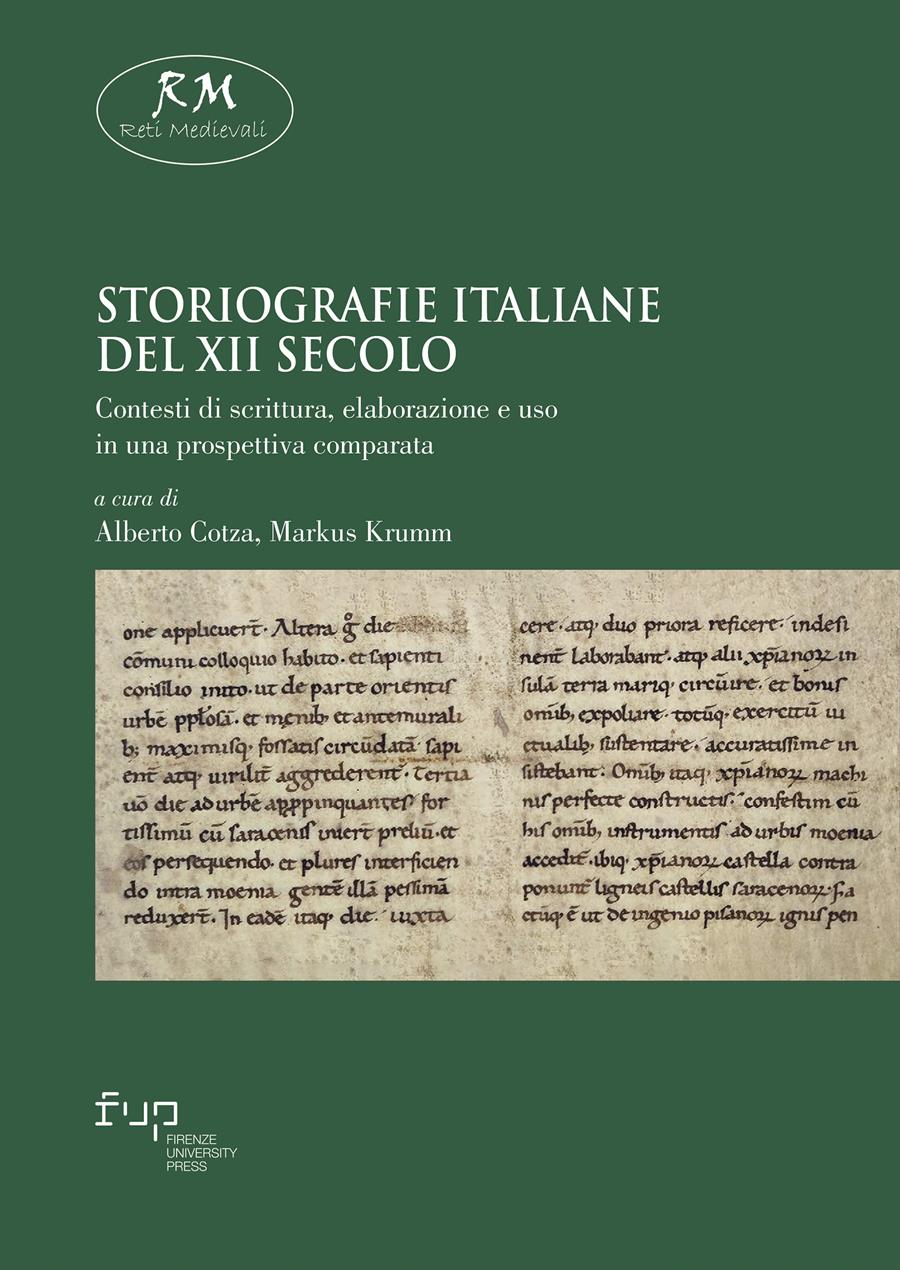- Storiografie italiane del XII secolo
- Edited by Alberto Cotza, Markus Krumm
Ipse sui vatis vota libellus agat. Entstehungskontexte des Liber ad honorem Augusti
- Sebastian Brenninger
- © 2024 Author(s) |
- CC BY 4.0
- DOI: 10.36253/979-12-215-0403-3.05
The Liber at honorem Augusti has traditionally been interpreted as a work of court historiography that was supposed to legitimize the still hardly consolidated Hohenstaufen rule in the Kingdom of Sicily. In contrast to this approach, the present article focuses on a completely different background against which the book was probably drawn up: local political conditions on the Southern Italian mainland. An in-depth analysis of hitherto largely neglected focal points of the narrative suggests that the polemical rhetoric was aimed at Archbishop Nicholas of Salerno, who had been led away in captivity at the time the Liber was created. A number of families from Salerno, who had lost in power in the course of Nicholas’ ascent, benefitted from his decline. Following Henry VI’s victory over Tancred of Lecce, these families had been able to elevate their candidate to the position of electee. With their ambitious, richly decorated manuscript, this group of families intended to oblige the imperial donee to make a counter-gift and act according to the role model as the new Solomon that was drafted on him in the Liber: Showing clemency to the givers, but strict justice towards the exiled, whose imminent return would jeopardize everything they had achieved.
- Keywords:
- Middle Ages,
- 12th century,
- Southern Italy,
- Salerno,
- Hohenstaufen,
- Historiography,
- Miniature Painting,
- Panegyric,
- Peter of Eboli,
- Liber ad honorem Augusti,
- Conrad of Querfurt,
Bayerische Staatsbibliothek, Germany - ORCID: 0009-0000-1592-9208
Chapter Information
Chapter Title
Ipse sui vatis vota libellus agat. Entstehungskontexte des Liber ad honorem Augusti
Authors
Sebastian Brenninger
Language
German
DOI
10.36253/979-12-215-0403-3.05
Peer Reviewed
Publication Year
2024
Copyright Information
© 2024 Author(s)
Content License
Metadata License
Bibliographic Information
Book Title
Storiografie italiane del XII secolo
Book Subtitle
Contesti di scrittura, elaborazione e uso in una prospettiva comparata
Editors
Alberto Cotza, Markus Krumm
Peer Reviewed
Number of Pages
354
Publication Year
2024
Copyright Information
© 2024 Author(s)
Content License
Metadata License
Publisher Name
Firenze University Press
DOI
10.36253/979-12-215-0403-3
ISBN Print
979-12-215-0402-6
eISBN (pdf)
979-12-215-0403-3
eISBN (xml)
979-12-215-0405-7
Series Title
Reti Medievali E-Book
Series ISSN
2704-6362
Series E-ISSN
2704-6079
